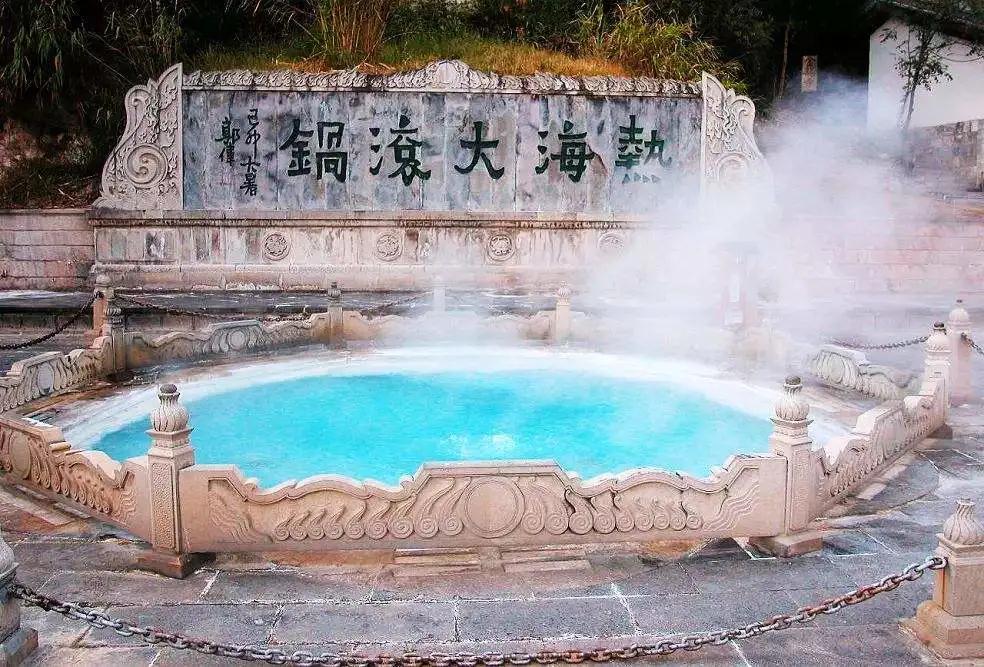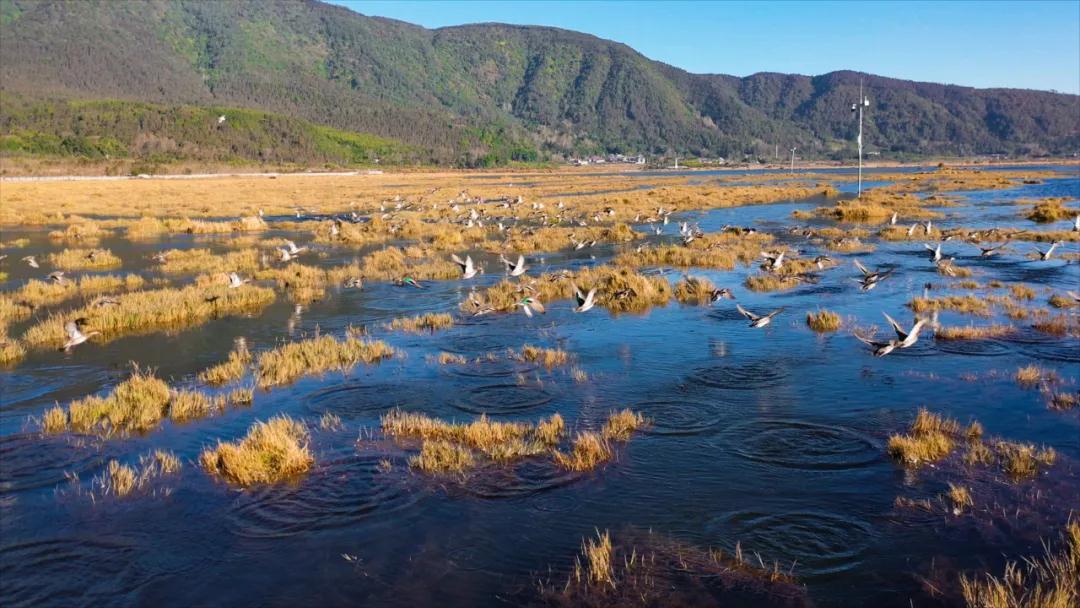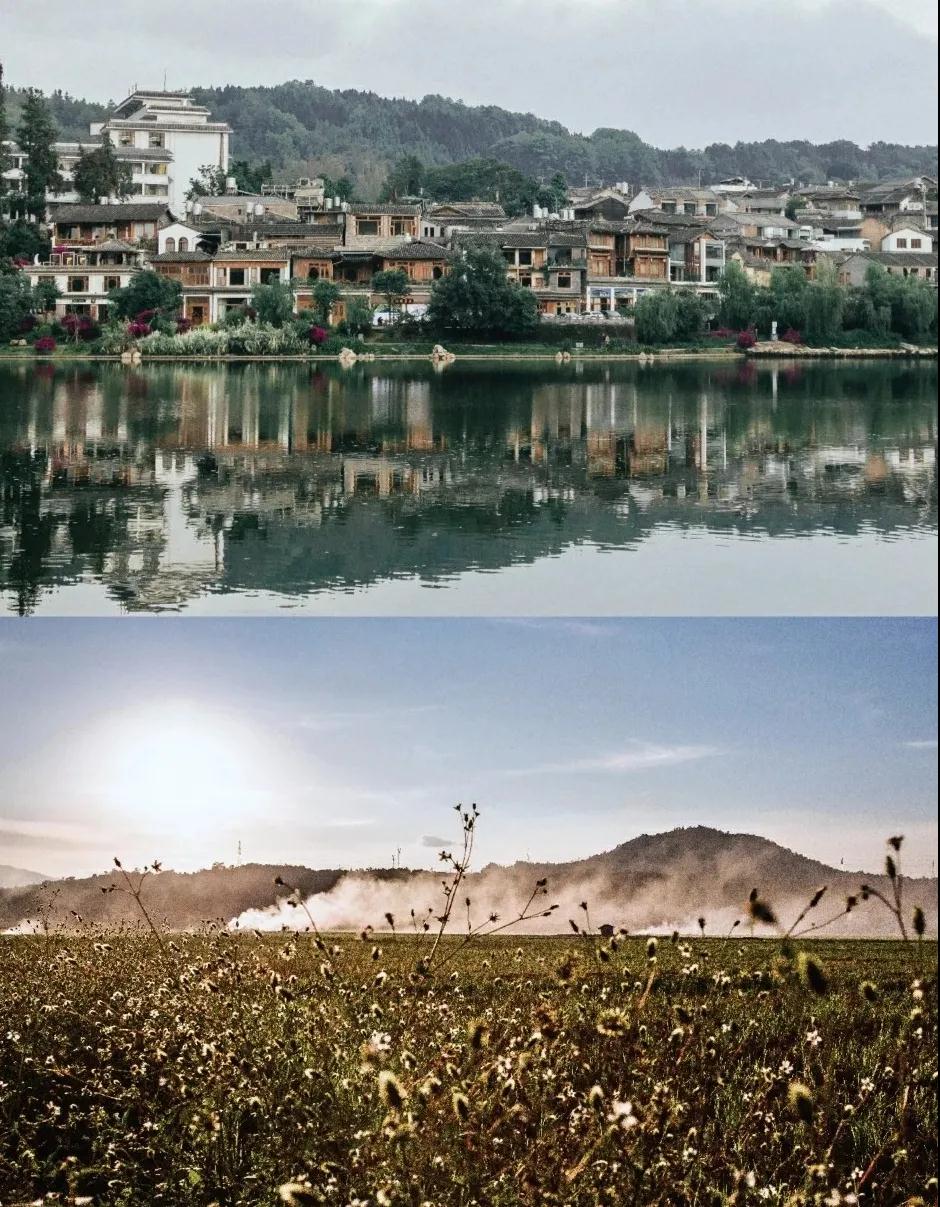Tengchong, a low-profile gem with hot springs, wetland and more
Writer: Chen Xiaochun | Editor: Stephanie Yang | From: Shenzhen Daily | Updated: 2021-01-18
A+ A- Print
It's safe to say that Tengchong is the most low-key place in Yunnan, a well-known tourist province. However, located at 25 degrees north latitude and surrounded by mountains, it’s an ideal place to enjoy a warm winter.
Here, you can soak in hot springs that are comparable to those in Japan, and check out the volcanoes that can compete with those in Iceland. Bordering Myanmar, Tengchong is home to 23 ethnic minorities. Since the establishment of the county in the Ming Dynasty (1368-1644), this key place along the ancient Tea Horse Road, a trade route mainly through Yunnan, Sichuan and Tibet since the 6th century, has been a prosperous place for trading.
Thermal Sea Scenic Area

The biggest hot spring in Rehai is known as the “boiling pot. File photos
As a saying goes, “Hot springs in Tengchong is the best in the world,” Tengchong is famous for its geothermal energy. It’s one of China’s three geothermal regions, with more than 80 hot springs where the highest temperature reaches 96.3 degrees centigrade. The Thermal Sea, or Rehai in Chinese, is located in the center of China’s southwestern geothermal region.
The scenic area is built around the scattered hot springs, all of which have their own distinctive mineral contents. You will find high-temperature hot springs rich in sulfur and low-temperature hot springs rich in carbonate.
The king of Rehai’s hot springs is known as the “boiling pot.” As the heat is too much for the human body to withstand, the “boiling pot” has been adapted to boil food such as eggs and peanuts, which are then served as snacks to tourists who emerge from the area’s surrounding hot springs.
Beihai Wetland

Winter is an excellent time for bird watching in Beihai Wetland.
The Beihai Wetland in Tengchong is one of the major wetlands in China and covers an area of 16.29 square kilometers. Surrounded by mountains, its height is 1,731 meters above sea level. It is a subtropical lava barrier lake and the only lava barrier marsh in Southwest China. Consisting of two natural lakes named Beihai and Qinghai, it is around 600,000 years old.
With a special ecological environment, the Beihai Wetland attracts a variety of precious birds and is an important habitat for rare plants and breeding waterfowl.
Winter is an excellent time for bird watching in Beihai Wetland, as birds migrate from north to south and stay through the winter here. There are all kinds of migratory birds including Tadorna ferruginea and Fulica atra.
Tengchong National Geological Park

Hot air ballooning offers an overlook of Tengchong’s diversified landforms.
As Tengchong is located in an area where the Indian Plate meets the Eurasian Plate, a complicated fault belt creates occasional volcanic eruptions. There are as many as 97 volcanoes of various sizes in the area surrounding Tengchong. It is nicknamed “a museum of geological features” for its diversified landforms that were created by frequent volcano eruptions hundreds of years ago.
Here you can experience the thrill of “flying” in a hot air balloon and see the volcano from the sky. As the balloon rises up slowly, you will take in the view of the mountains, and overlook the lush forest and the craters of volcanoes, which will definitely make your travel experience very exciting and unforgettable.
Near the craters, you will see gray, red and black volcanic rocks, which are porous, large and light. They can float above the water surface and are rich in minerals. Many tourists will take one or two back as a souvenir.
Heshun Ancient Town

The tranquilty of the Heshun Ancient Town.
Heshun Ancient Town is one of the few ancient towns in China with real life. Enter any memorial archway of the ancient town and walk into the alley; you will encounter many street vendors selling fruits, vegetables and local specialties. This is the hundred-year-old bazaar of Heshun.
There are many buildings of the architecture styles of the Ming (1368-1644) and Qing (1644-1911) dynasties. Enjoying a long history and civilization of more than 600 years, there are around 1000 traditional folk residences in Heshun, 100 of which were built in the Qing Dynasty, and is known as the “Living Fossil of Chinese Ancient Architecture.”
As a must-pass node along the Silk Road in Southwest China, Heshun people always have the tradition of venturing abroad to other countries like Myanmar and India to make a better living. The hundreds of years’ cross-border trade and culture exchange has also brought an exotic feel to Heshun.